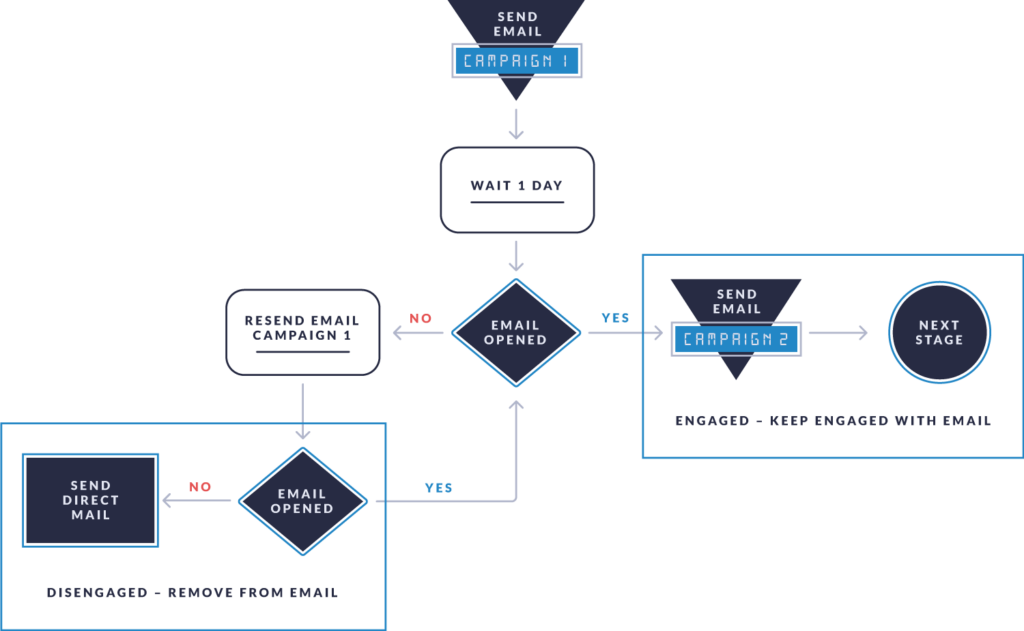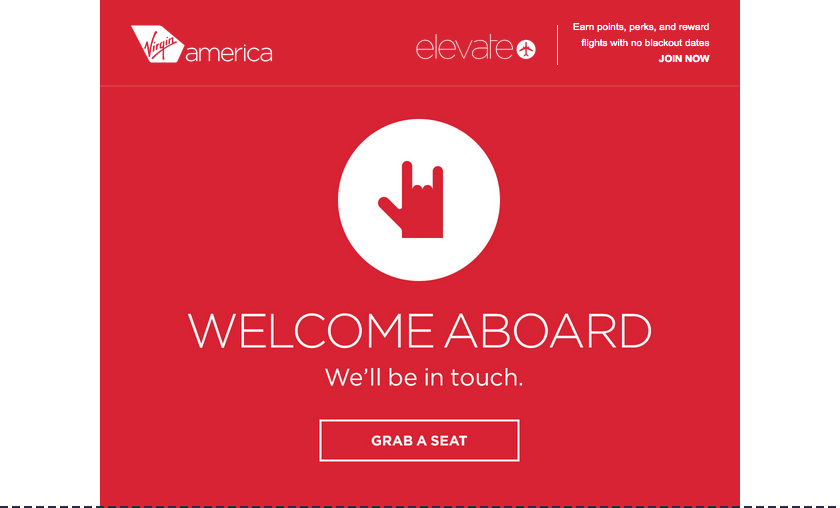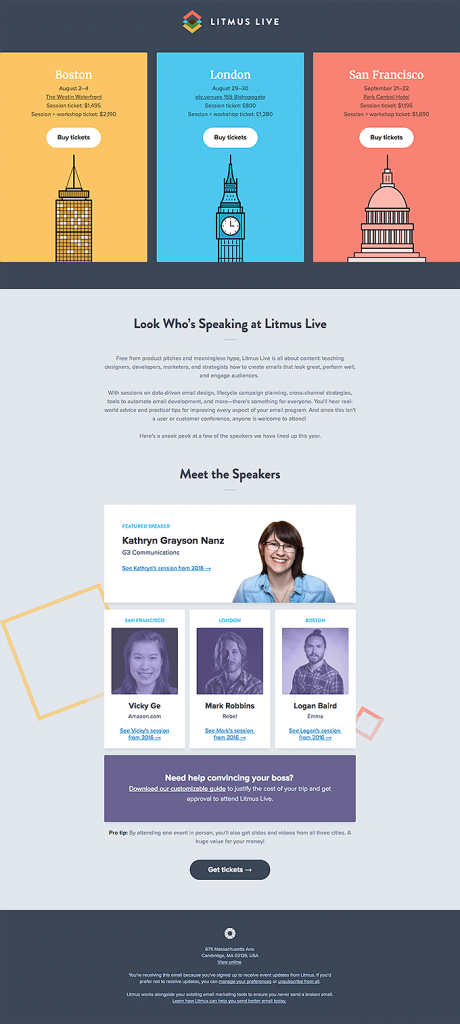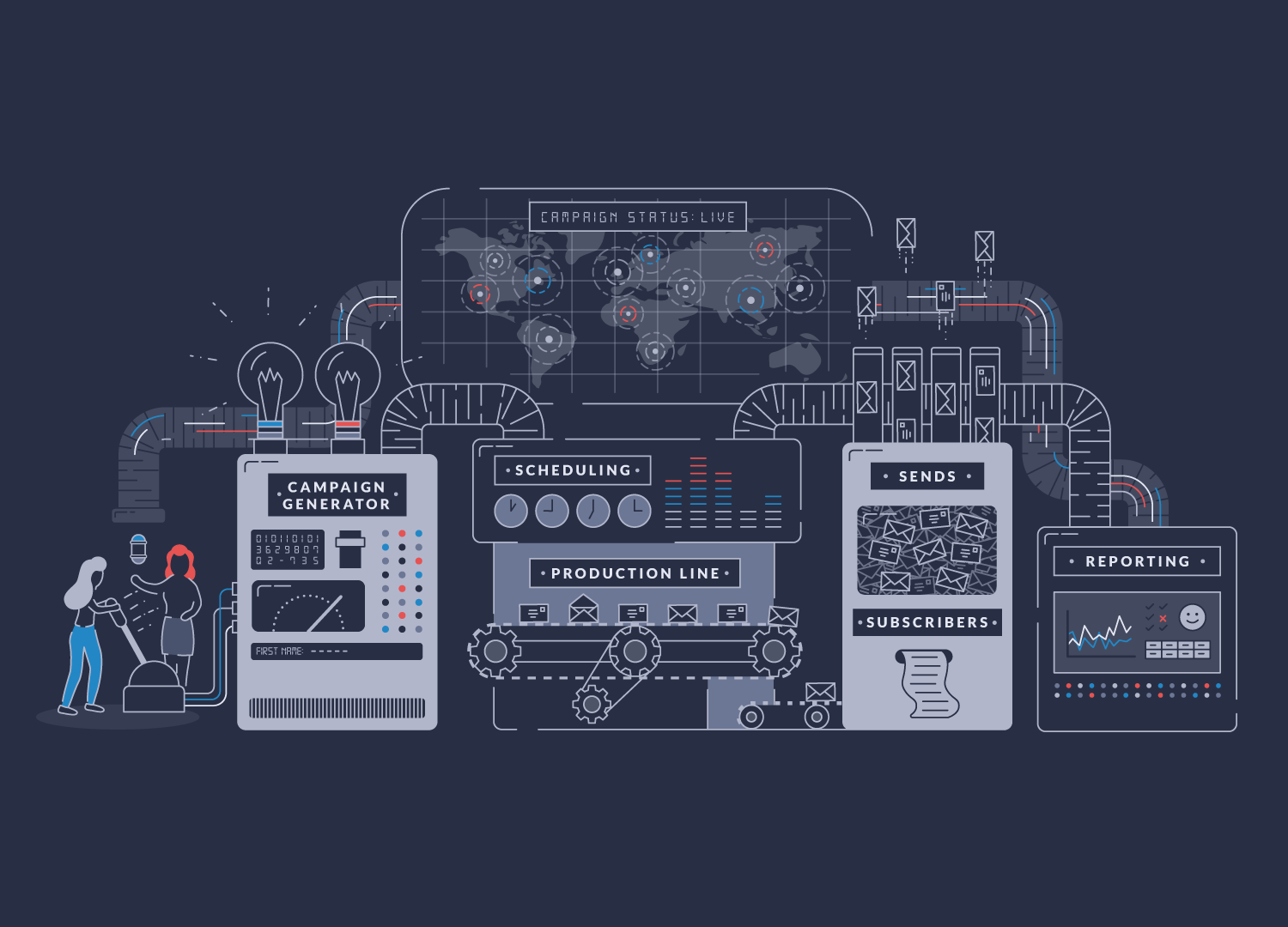Whether you’ve already automated your email marketing or are just beginning your discovery into how automation can work for you, here we bust the common myths surrounding email marketing, explore what brands have used it well and what you can learn from their method.
You are likely familiar with – and already using – email marketing to reach your customers and automated emails are no different. They are simply designed to trigger in a direct response to an individual’s action on a feature of your digital estate.
Myth busting 101
There are plenty of misconceptions around email automation and before we jump into the case studies, let’s explore the most common rebuttals we hear around the applications and use of automated emails.
1. It’s only for big businesses/organisations
Automation can work for any size operation. In small businesses, email marketing can often not feel like a priority – but automating the process helps free up staff and allows your business to grow without relying on additional staffing costs and time.
2. But I’ll lose more time getting it set up than I will ultimately get back
Email automation is highly scalable, can grow with you and doesn’t require a large budget behind it to work well, meaning you can start small. Beginning your automated processes on simple triggers like welcome emails doesn’t need a lot of your time. But if you’re still feeling unsure, we can help – get in touch and we can do the process for you.
3. My business is doing just fine, I don’t need automation
Automated email marketing is relatively inexpensive when compared to other forms of traditional marketing, and the ROI is easily measured and tracked, where in other mediums it isn’t.
4. But why should you transition to automation if your email marketing is already returning results?
The key reason why other businesses turn to automation is speed – it allows you to reach your subscriber lists within a few minutes. You can quickly target key accounts with tailored messages, cutting down on the time from idea to implementation. Being able to focus your efforts on warm contacts can increase whatever metric you are looking to develop – from brand awareness, to spend, to engagement.

5. But my company will lose its personality
Moving to automated marketing doesn’t necessarily mean your brand will lose its personal touch or tone of voice. What it does give you, is a space to evaluate how you want your brand to be perceived, right at the beginning of your workflow.
Brand marketing means that companies can keep their personality, and by ensuring you have guidelines and best practice documents available to all involved with the email automation process, your business can always speak with one voice. Automating this process means less room for error, as it is likely fewer members of your team will need to be involved with the content and design elements of the email.
6. I don’t want to spam my users!
If, like many clients, you’re concerned about spamming your contact list with too many messages when you transition to automation, rest assured that email automation allows for more intelligent segmentation of your lists. This ensures the correct people are seeing only the content designed for them, rather than sending all emails to everyone that are unlikely to result in conversions.
7. If I make a mistake, it will be magnified
Mistakes happen. And in the automated process, you need to ensure that you have a robust QA procedure and quality assurance behind the scenes with your team. However, the same is true if your single email marketing strategy doesn’t have an informed QA process. You are just as likely to end up annoying your target audience with misinformation and internal mistakes in copy/offers/deadline dates as you are with automated emails.
Case studies
So, if you’re convinced that automated email marketing is right for you, what kinds of automated campaigns should you be using? Here, we showcase the 3 top ROI-generating automated email campaign types, with real-life examples of best practice.
1. Welcome emails
Almost every company offers some form of subscriber list, and an easy way to begin the conversation with your key audiences is to offer a welcome email that stands out from the crowd.
This is the perfect time to set expectations of your brand, and the ideal time to gain invaluable insight into your recipient to continue the conversation with them to keep them engaged.
Here, Virgin America is showcasing what makes their brand unique, with fun and playful language, including a call-to-action that reads “grab a seat”.

Note that they aren’t bragging or shouting loud about what an amazing airline they are, they are more focused on showing their brand, making their subscribers feel welcome, and demonstrating how they can meet their needs.
2. Nurture tracks – keeping your subscribers engaged
These are a series of automated emails designed to drive relevant content to your subscriber list on a continuous basis, with the ultimate aim of converting these recipients into sales in the future, as well as building brand awareness and visibility.
Here is an example of this done well from Framebridge:

Notice how Framebridge is not using their emails for purely promotional means – they are using highly engaged and useful material to teach the recipient a skill. Framebridge are ultimately playing the long game, building trust and like-ability in their brand before moving their subscriber lists towards sales. Even their CTA button states ‘educate me’ further emphasising the point that Framebridge are using content-first marketing, sending relevant information to the right lists.
By understanding the results your nurture tracks yield, you can more specifically target your target audience with what works for them. It’s more cost-effective to identify who is receptive and focus your spend on them, as your ROI is likely to be higher.
3. Automated event emails
Big trade events, conferences or even webinar series’ can fill your content calendar, but all too often, internal teams are stretched, and email marketing is not at the forefront of everyone’s mind in the planning stages. Automating your event email cycles can save you resources, as well as precious time.
Litmus Live demonstrates the time saving value of promoting multiple events in one email send. Here, Litmus strikes the balance of content and design, simplifying their message, and having a clear CTA for each event, as well as promoting their speakers – all in one email.
Again, for these emails to return a high ROI, segmentation is key. By building a picture of your audiences’ interests, you can more accurately market events of interest to them. This could be achieved through location (when promoting a physical event), or even by attendee status for digital events like webinars.

Want to implement your own automated email marketing?
Hopefully this has given you a point in the right direction when it comes to automated email campaigns, but we’re here to help – get in touch and we’ll help you develop campaigns on your platforms to get the strongest results possible.

